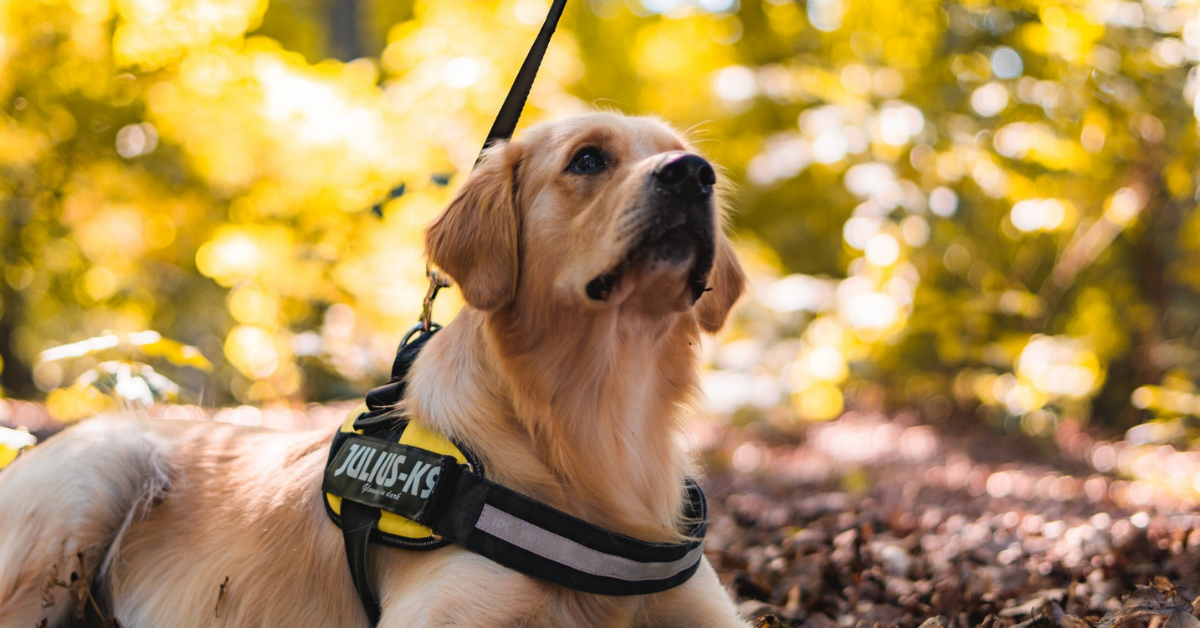
What is a “Service Dog”?
Most people are familiar with the guide dogs that assist blind people. Increasingly people with many different sorts of disabilities, some of them not so obvious have begun to use assistance or “service” dogs, and even other animals to help them in their everyday lives. Since the ADA (Americans with Disabilities Act) first passed in the 1990s, there has been little clear, legal definition of the term “service animal” and how they should be allowed to operate in society. This all changed in July 2010, when the Attorney General, Eric Holder, released new guidelines governing service dogs.
According to the new definition, service animal, “means any dog that is individually trained to do work or perform tasks for the benefit of an individual with a disability….” This definition contains some key changes. First, it specifically says “dog” and goes on to exclude other types of animals. Whereas, around the country there are numerous people who use other animals including miniature horses (these are accepted as service animals in some situations), monkeys and rodents as service animals. Under the new definition, most no longer qualify. Second, the new rule states that the dog must be leashed or tethered “except when performing work…where such…would interfere with the performance of the task….” The new rule also says that dogs whose sole function is to provide “emotional support, well-being, comfort and companionship” are not service dogs under the new definition.
One rule change that may have a positive effect is that service animals are exempt from breed bans, explicitly stating that individual animals and not breeds or types are qualified as service dogs. It’s common to see the traditional Labrador and Golden Retrievers as service dogs but also, German Shepherds, Lhasa Apsos and even Dalmatians pulling wheelchairs or assisting someone with Parkinson’s disease.
Legal definitions are nice, and knowing the differences is sometimes good. But, if you are a disabled person who would like to get a service dog or, a business owner who would like a clear understanding of how it affects your business, what does it all mean?
It means, in the United States, by federal law any person who has any type of disability regardless of whether that disability is apparent or not, is entitled to have and to be accompanied by a dog that is trained to perform some sort of assistance beyond mere emotional support and comfort, anywhere that disabled person may go. There are a few exceptions to this rule such as operating rooms, jails and prisons, and clean room facilities for research or manufacturing.
If you are a disabled person who is thinking about getting a dog, think of the freedoms it will grant you. So long as you or someone in your support group can and is willing to help care for, feed, walk and clean up after the dog, they can offer such increased independence and positive reinforcement that every disabled person should have one.
If you are a businessperson who wants to conform to the law, it’s important to understand, if you are open to the public, you must allow the disabled person and their dog into your establishment. This applies equally to places that normally exclude dogs such as hotels/motels, restaurants and bars. It also applies to employees. The law states that business must make “reasonable accommodation” for the disabled person and their dog. It further states that it is illegal, even for private business to discriminate against any person who is otherwise qualified for a position because of their disability. Therefore, businesses that have disabled employees on their payroll must allow said employee to be accompanied by a service dog to work and they cannot refuse to hire someone because of their disability or presence of a service dog, provided the individual is otherwise qualified for the position.
The human-dog bond is strong and goes back millennia. They have been our helpers, protectors and companions for all of human history. The technology boom of today means that people survive things, even in war, with debilitating disease and major disaster that they never have before. The US and several other countries, which also have increasing disabled populations, are using today’s technology, legislation and the ancient human-dog bond to increase the independence and quality of life for their disabled populations while providing them a unique way to participate in society more fully than in generations past.
For more information on the American’s with Disabilities Act and, service animals, see the links below.






